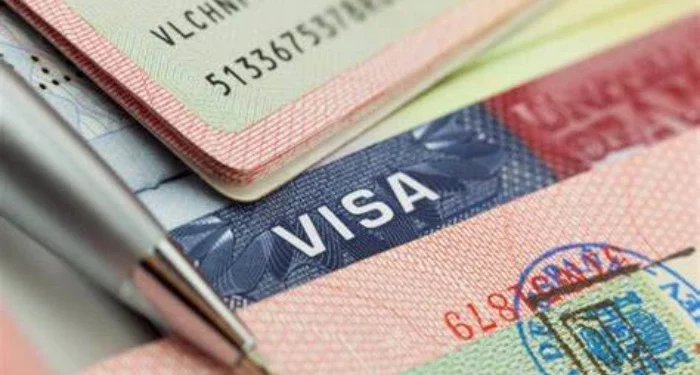Studying in Australia is a dream for many international students, but it comes with financial implications. Before applying for an Australian study visa, it’s crucial to understand how much money you’ll need. This amount not only covers tuition fees but also living expenses during your stay in the country. In this article, we’ll break down the various costs associated with studying in Australia and help you get a clear picture of the financial requirements for your study visa application.
Tuition Fees
Varying Costs by Course and Institution
The tuition fees for studying in Australia can vary significantly depending on the type of course and the institution you choose. For example, courses in high – demand fields like medicine, dentistry, and veterinary science are generally more expensive. A medical degree at a top – tier Australian university can cost upwards of AUD 50,000 per year. On the other hand, courses in the humanities, such as literature or history, may be more affordable, with annual tuition fees ranging from AUD 15,000 to AUD 30,000 at some institutions.
University tuition fees also differ based on the reputation and ranking of the institution. Prestigious universities often charge higher fees. For instance, the University of Melbourne, one of Australia’s leading universities, has different fee structures for domestic and international students. International students enrolling in a business undergraduate program at the University of Melbourne may pay around AUD 40,000 per year, while a regional university might charge around AUD 25,000 for a similar program.
Vocational and technical courses, like those offered at Technical and Further Education (TAFE) institutions, are usually more cost – effective. TAFE courses in areas like hospitality, automotive mechanics, or hairdressing can have annual tuition fees starting from as low as AUD 5,000, depending on the course and the duration.
Fee Payment Options
Most Australian institutions offer different fee payment options. Some allow students to pay the tuition fees in installments, usually on a semester – by – semester basis. This can be helpful for students who may not have the entire amount upfront. For example, if your annual tuition fee is AUD 20,000, you may be able to pay AUD 10,000 at the start of each semester. However, some institutions may charge a small administrative fee for this installment option.
Other institutions may offer a discount for students who pay the full tuition fee in advance. This can be an attractive option if you have the financial means to do so, as it can save you a significant amount of money over the course of your studies. For instance, an institution might offer a 5% discount if you pay the full year’s tuition fee at once. So, if your annual tuition is AUD 30,000, you would only need to pay AUD 28,500.
Living Expenses
Accommodation Costs
Accommodation is one of the major expenses for international students in Australia. The cost can vary depending on the city and the type of accommodation you choose. In major cities like Sydney and Melbourne, the cost of living, including accommodation, is generally higher.
If you choose to live in a student dormitory or a residential college affiliated with your university, the cost can range from AUD 200 to AUD 500 per week. These dormitories often provide a convenient living option, with facilities like shared kitchens, study areas, and sometimes even meals. However, they may have limited space and less privacy compared to other options.
Renting a private apartment or a house is another option. In Sydney, a one – bedroom apartment in the city center can cost around AUD 500 to AUD 800 per week, while in the suburbs, it may be slightly cheaper, around AUD 350 to AUD 600 per week. In Melbourne, similar apartments in the city center can cost AUD 450 to AUD 700 per week, and in the suburbs, AUD 300 to AUD 550 per week. If you share an apartment with other students, you can significantly reduce your accommodation costs. Sharing a three – bedroom apartment with two other students, for example, could bring your weekly rent down to around AUD 150 to AUD 300 per person.
Food and Grocery Expenses
Food is another significant expense. On average, international students can expect to spend around AUD 150 to AUD 300 per week on food. If you cook your own meals, you can save money. Grocery shopping at local supermarkets like Woolworths or Coles can be cost – effective. Buying in bulk, especially non – perishable items like rice, pasta, and canned goods, can also help reduce costs. For example, a bag of rice that costs AUD 10 can last for several weeks if you cook regularly.
Eating out at restaurants or cafes can be more expensive. A simple meal at a mid – range restaurant can cost around AUD 15 to AUD 30 per person, while a more elaborate meal at a fancy restaurant can cost upwards of AUD 50 per person. However, occasional dining out can be a part of the student experience.
Transportation Expenses
Transportation costs in Australia depend on the city and your mode of transportation. In most cities, public transportation is well – developed. A monthly public transportation pass, which allows you to use buses, trains, and trams, can cost around AUD 100 to AUD 200, depending on the city and the zone you live in. For example, in Sydney, a monthly Opal card for unlimited travel in Zone 1 (the central business district and inner suburbs) costs AUD 176.80.
If you choose to buy a car, you need to consider not only the purchase price but also ongoing costs like fuel, insurance, and maintenance. A second – hand car can cost anywhere from AUD 3,000 to AUD 10,000, depending on the make, model, and condition. Fuel costs can add up, especially if you do a lot of driving. Insurance for a young driver can be relatively expensive, starting from around AUD 1,000 per year.
Other Expenses
There are other miscellaneous expenses that you need to account for. This includes costs for textbooks and study materials. Textbooks can be quite expensive, with some costing up to AUD 200 each. However, you can save money by buying second – hand textbooks or using e – books. Some universities also have a library where you can borrow textbooks for free.
You may also need to budget for entertainment, such as going to the movies, concerts, or sporting events. A movie ticket in Australia usually costs around AUD 15 to AUD 20. Additionally, you need to consider health insurance. All international students in Australia are required to have Overseas Student Health Cover (OSHC). The cost of OSHC can vary depending on the provider and the level of cover, but on average, it can cost around AUD 500 to AUD 1,000 per year.
Demonstrating Financial Sufficiency for the Visa Application
Bank Statements
When applying for an Australian study visa, you need to provide bank statements to prove that you have enough money to cover your tuition fees and living expenses. The bank statements should show a stable balance over a certain period, usually at least 6 months. The amount you need to show in your bank account depends on the length of your course and the estimated living expenses. For example, if you are applying for a one – year course with tuition fees of AUD 20,000 and estimated living expenses of AUD 20,000, you should have at least AUD 40,000 in your bank account.
The bank statements should be in English. If they are in a foreign language, you need to provide a certified translation. Make sure the statements clearly show your name, the account number, and all the transactions, including deposits and withdrawals.
Sponsorship Letters
If someone else, such as a parent or a sponsor, is funding your studies, you need to provide a sponsorship letter. The letter should state the relationship between you and the sponsor, the amount of money the sponsor is willing to provide, and the source of their income. The sponsor also needs to provide their own bank statements to prove their financial ability to support you. For example, if your father is sponsoring your studies, his bank statements should show that he has enough funds to cover your tuition and living expenses.
Scholarships and Financial Aid
There are various scholarships and financial aid options available for international students in Australia. These can significantly reduce the amount of money you need to pay out – of – pocket. Some scholarships are based on academic merit, while others are for students from specific countries or in certain fields of study. For example, the Australian Government offers the Endeavour Scholarships and Fellowships, which provide financial support to students from around the world. Universities also have their own scholarship programs. You should research and apply for these scholarships as early as possible, as the competition can be fierce.
Conclusion
In conclusion, the amount of money required for an Australian study visa depends on multiple factors, including the type of course, the institution, the city where you’ll be studying, and your lifestyle. Tuition fees can range from a few thousand dollars to over fifty thousand dollars per year, and living expenses can add up to tens of thousands of dollars annually. It’s essential to carefully calculate all these costs and ensure that you have the necessary funds or financial support to cover them. Demonstrating financial sufficiency through bank statements, sponsorship letters, or evidence of scholarships is a crucial part of the study visa application process. By planning your finances well in advance and exploring all available options, you can make your dream of studying in Australia a reality. Remember, studying in Australia is not only an investment in your education but also an opportunity to experience a new culture and gain valuable skills for your future career.
Related topics:



















